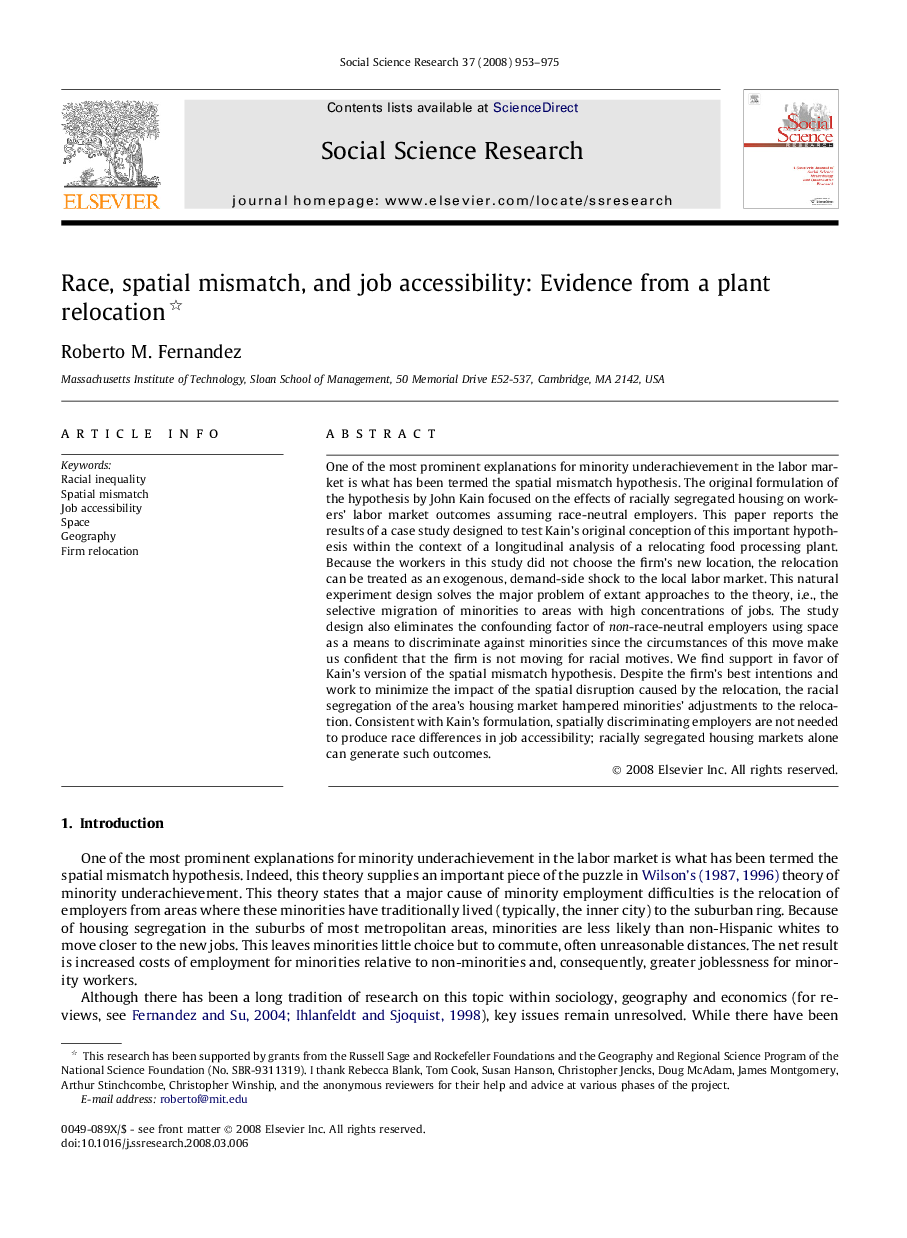| کد مقاله | کد نشریه | سال انتشار | مقاله انگلیسی | نسخه تمام متن |
|---|---|---|---|---|
| 956425 | 928331 | 2008 | 23 صفحه PDF | دانلود رایگان |

One of the most prominent explanations for minority underachievement in the labor market is what has been termed the spatial mismatch hypothesis. The original formulation of the hypothesis by John Kain focused on the effects of racially segregated housing on workers’ labor market outcomes assuming race-neutral employers. This paper reports the results of a case study designed to test Kain’s original conception of this important hypothesis within the context of a longitudinal analysis of a relocating food processing plant. Because the workers in this study did not choose the firm’s new location, the relocation can be treated as an exogenous, demand-side shock to the local labor market. This natural experiment design solves the major problem of extant approaches to the theory, i.e., the selective migration of minorities to areas with high concentrations of jobs. The study design also eliminates the confounding factor of non-race-neutral employers using space as a means to discriminate against minorities since the circumstances of this move make us confident that the firm is not moving for racial motives. We find support in favor of Kain’s version of the spatial mismatch hypothesis. Despite the firm’s best intentions and work to minimize the impact of the spatial disruption caused by the relocation, the racial segregation of the area’s housing market hampered minorities’ adjustments to the relocation. Consistent with Kain’s formulation, spatially discriminating employers are not needed to produce race differences in job accessibility; racially segregated housing markets alone can generate such outcomes.
Journal: Social Science Research - Volume 37, Issue 3, September 2008, Pages 953–975